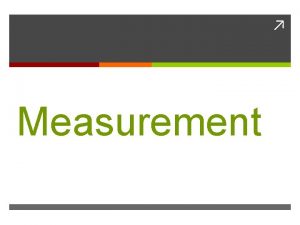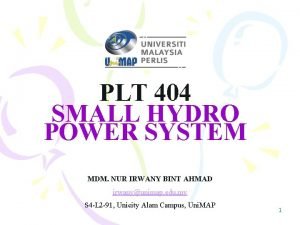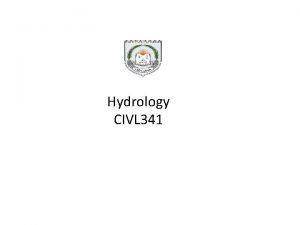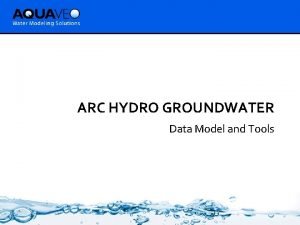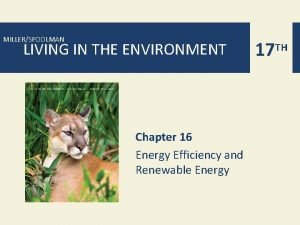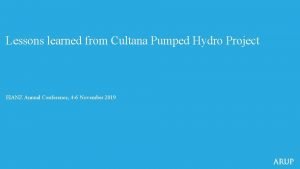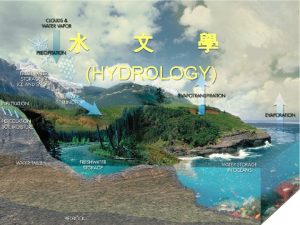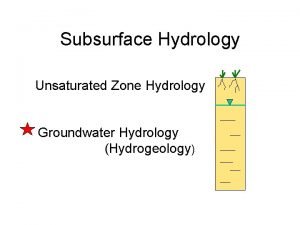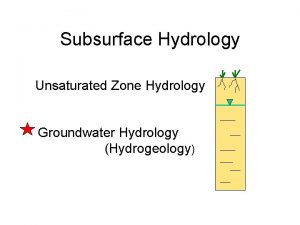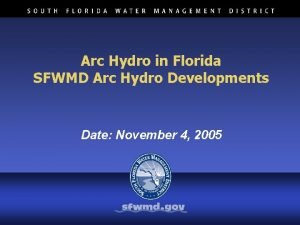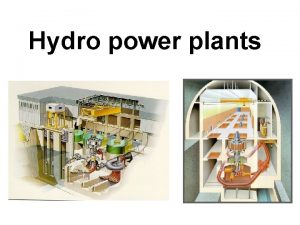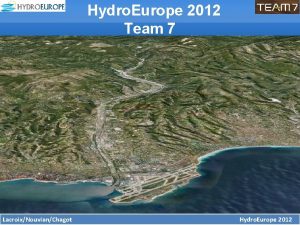HYDROLOGY definition hydro logy The term hydrology is
























- Slides: 24


HYDROLOGY | definition hydro. logy The term hydrology is from Greek: hydōr, "water"; and, logos, "study". noun the science dealing with the occurrence, circulation, distribution, and properties of the waters of the earth and its atmosphere.

HYDROLOGY | history The Romans constructed numerous aqueducts to bring water from distant sources into their cities and towns. Waste water was removed by complex sewage systems and released into nearby bodies of water. Some aqueducts also provided water for mining, processing, manufacturing, and agriculture. 4000 BC Along the Indus River, Pakistan, the Tigris and Euphrates in Mesopotamia, Hwang Ho in China, and the Nile in Egypt that the first hydraulic engineers created canals, levees, dams, subsurface water conduits, and wells 200 AD Perault Linked rainfall to flow of the river Seine Marriotte Combined velocity and river cross section to obtain discharge of the river Seine 1500 Leonardo da Vinci and Bernard Palissy independently reached an accurate representation of the hydrologic cycle 1800 Pitot Bernoulli Euler Chezy Dalton Made progress in applications of mathematics, fluid mechanics, and hydraulics Darcy Worked on groundwater hydrology Poiseuille Stokes Manning Reynolds Mead Meyer 1850 1900 Hazen Gumbel Hurst Meinzer Hubbert Prandtl Chow Thornthwaite Penman Horton

HYDROLOGY | branches Chemical Hydrology Eco Hydrology Hydrogeology Hydrometeorology Study of chemical characteristics of water Study of interactions of living organisms and the hydrologic cycle Study of the distribution and movement of groundwater in the soils and rocks of the Earth’s crust Study of the transfer of water and energy between land water body surfaces and the lower atmosphere Water Quality Chemistry of water in rivers and lakes, both of pollutants and natural solutes Surface Hydrology Drainage Basin Management Study of hydrologic processes that operate at or near Earth's surface Covers waterstorage, in the form of reservoirs, and floodprotection

HYDROLOGY | applications Designing drainage systems Assessing export of sediment & nutrients from fields to water systems Designing irrigation schemes Designing Urban drinking water and sewer systems Assessing impacts of natural and human induced environmental change on water resources Determining the water balance for a region Determining agricultural water balance Predicting floods Designing buffers

HYDROLOGY | the hydrologic cycle 3 Transpiration Evaporation Infiltration 2 Condensation 4 Runoff Precipitation Subsurface flow 5 1 6 7


HYDROLOGY | themes | atmospheric water “Water present in the atmosphere either as a solid (snow, hail), liquid (rain) or gas (fog, mist)” Topics • Cloud formation • Precipitation types • Measuring precipitation • Evaporation types • Estimating evaporation

HYDROLOGY | themes | surface water “Water at the surface, whether stagnant in the form of surface storage or flowing in rivers, or as overland flow on slopes” Topics • Bernoulli’s equation • Measuring water velocity and flow • Hydrograph analysis • Pollutant loads

HYDROLOGY | themes | groundwater & soil water “Water beneath the land surface that fully saturates the pores in the ground is called groundwater” “Water stored in the unsaturated zone above the water table is called soil water” Topics • Aquifers • Darcy’s Law • Soil moisture • Capillary rise & evaporation • Infiltration & percolation


HYDROLOGY | distribution of earth’s water

HYDROLOGY | fresh water

HYDROLOGY | fresh water | rivers & lakes

HYDROLOGY | watershed | definition “A watershed is an extent or an area of land here surface water from rain and melting snow or ice converges to a single point, usually the exit of the basin, where the waters join another water body, such as river, lake, reservoir, wetland, sea, or ocean” Also known as: • Catchment area • Catchment basin • Drainage area • River basin • Water basin

HYDROLOGY | watershed | US hydrologic regions

HYDROLOGY | watershed | hydrologic classification 1. Region 21 nationally 4. Watershed 5 -15 per sub-basin 2. Sub-region 221 nationally 3. Basins 378 nationally 4. Sub-basins 2246 nationally 700 square miles average area 5. Sub-watershed 5 -15 per watershed

HYDROLOGY | watershed | characteristic factors Topography determines the speed with which the runoff will reach a river. Clearly rain that falls in steep mountainous areas will reach the river faster than flat or gently sloping areas. Shape will contribute to the speed with which the runoff reaches a river. A long thin catchment will take longer to drain than a circular catchment. Size will help determine the amount of water reaching the river, as the larger the catchment the greater the potential for flooding. Soil type will help determine how much water reaches the river. Sandy soils are very free draining and rainfall on sandy soil is likely to be absorbed by the ground. Clayey soils can be almost impermeable and therefore rainfall on clay soils will runoff and contribute to flood volumes. Land use can contribute to the volume of water reaching the river, in a similar way to clay soils. For example, rainfall on roofs, pavements and roads will be collected by rivers with almost no absorption into the groundwater.

HYDROLOGIC THINKING ! Precipitation, snow, seasonality, fire, soil, nutrients, flora/fauna, ground water, floods, rivers, climate change?

ARID

SEMI-ARID

NATIVE PRAIRIE

RAINFORESTS

REFERENCES • • Introduction to Physical Hydrology, Martin R. Hendricks Hydrology and Floodplain Analysis, Bedient, Huber and Vieux National Geographic Magazine www. wikipedia. org
 Life logy
Life logy Language
Language Suffixes such as iatry ist and logy are related to
Suffixes such as iatry ist and logy are related to Logistiikkayhdistys
Logistiikkayhdistys Bio means life logy means
Bio means life logy means Hyperglycemia prefix
Hyperglycemia prefix Preventive and predictive maintenance of hydro power plant
Preventive and predictive maintenance of hydro power plant Edevu hydro power project
Edevu hydro power project Hydro one tillsonburg
Hydro one tillsonburg Mdm hydra
Mdm hydra North hydro
North hydro Hydro
Hydro Thermal power plant introduction
Thermal power plant introduction Toronto hydro career
Toronto hydro career The first step in diagnosing a hydro-boost problem is
The first step in diagnosing a hydro-boost problem is Compound orange spirit
Compound orange spirit Arc hydro groundwater
Arc hydro groundwater Difference between open cycle and closed cycle mhd system
Difference between open cycle and closed cycle mhd system Advantage and disadvantage of hydro energy
Advantage and disadvantage of hydro energy Bendeela pondage
Bendeela pondage Advantage and disadvantage of hydro energy
Advantage and disadvantage of hydro energy What does ponics mean
What does ponics mean Hydro
Hydro What is floating head in heat exchanger
What is floating head in heat exchanger Enterprise risk management at hydro one case study solution
Enterprise risk management at hydro one case study solution




